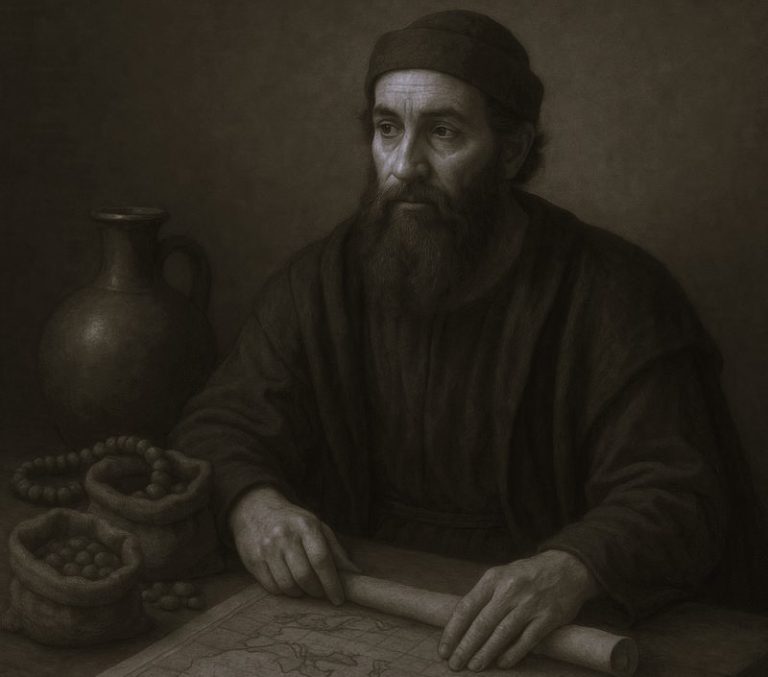

Cult actions can be spontaneous, improvised, and therefore unsystematic.

By Dr. Michael Lipka
Professor of Religious Studies
University of Patras
Human actions may be divided into those that follow a specific pattern and those that do not. Actional patterns, in turn, can be analyzed in various ways. In our context, we are interested in those actional patterns that are directed towards, i.e. presuppose the direct and unmediated participation by, divine concepts. We shall call these cult actions.
Cult actions can be spontaneous, improvised and therefore unsystematic, or conversely, they can follow a pattern of periodical repetition, sanctioned by tradition. Henceforth, I refer to cult actions that are conducted according to such a pattern as ‘ritual’. I refer to the act of selecting certain rituals and relating them to a specific deity as ritual focalization. Virtually any human action can become a cultic action, and any cultic action in turn can be submitted to a specific repetitive pattern and therefore be ritualized.

It must be noted that some of the most important Roman rituals such as the sacrifice, considered on their own, were rather unspecific. They mark the difference between the divine and the human, but not the specific, individual nature of the divine concept thus conceptualized. It was most notably the spatial and temporal focus within which the ritual focus was contextualized that made the latter a constituent of a specific god. Vice versa, a ritual focus reinforced significantly and partly determined the spatial and temporal focus in which it operated. For instance, the focal character of a temple was to a large extent determined by the rituals, especially sacrifices, performed in it. On the other hand, a sacrifice of a ram in, or at, the temple of Iuppiter, was by implication a Jovian ritual (here: ovis Idulis).443 The same interaction can also be observed between rituals and temporal foci. For instance, various unspecific rituals such as the offering of wine, incense, and sacred meals, were performed repeatedly by the arvals during the celebrations of Dea Dia for three days in May (temporal focus). However, it was only on the second day that these were actually performed in, or at, the sanctuary of the goddess.444 Consequently, the various rituals performed outside the sanctuary reinforced not the spatial, but the temporal focus of the cult of Dea Dia. The fact that the rituals were performed during the period in question and by specific personnel (the arvals) made them ritual foci of the cult of Dea Dia. A prime example of a spatial and temporal focus together, interacting with various, essentially independent ritual foci, were the Capitoline temple and the Ides of September (September 13). The anniversary of the temple fell on that day. The above-mentioned ram (ovis Idulis) was sacrificed on the Capitol on this day, as was normal on the Ides. A meal was offered to honor Iuppiter on the Capitol (epulum Iovis). A nail was driven into a wall of the Capitoline temple in a ceremonial context obscure to us. Not only spatial and temporal, but also personnel foci of a cult were related to its rituals. Thus the flamines defined, and were defined predominantly by, the performance of rituals to their specific gods. For instance, it was the flamen Dialis who offered the ovis Idulis and a lamb (?) to Iuppiter at the beginning of the vintage season,445 while his wife, the flaminica, sacrificed a ram to Iuppiter in the Regia each month on the Nonae.446
Furthermore, functional foci were related to rituals. It suffices here to recall Iuppiter’s competence as a wine god, as supported by the ritual foci of the god’s cult during the two wine festivals (Vinalia, April 23 and August 19) or by the sacrifice conducted by the flamen Dialis at the beginning of the vintage season, referred to above. Similarly, one may point to rituals targeting Apollo during his Games (ludi Apollinares, July 6–13). These were characterized by theatrical performances, to such an extent that later associations of actors dubbed themselves parasiti Apollinis. The Games, therefore, clearly highlighted the functional focus of the god of letters and culture, not the unpopular healing god.447 In the same vein, sacrificial animals were on occasion chosen for the functional foci of the gods in question. For instance, gods of the underworld received dark-colored victims, and Mars, as the god of war, received the sacrificial horse.448 Finally, rituals interacted with iconographic foci. For it was not any representation of the god, but the specific cult image that was targeted by the ritual. One could add further evidence, but it is already clear that ritual foci blended in with all the other constituent concepts of the divine.
The rituals employed to venerate traditional Roman gods were relatively few in number and kind. They included sacrifices, meals, Games, processions, theatrical or musical performances and quite often a combination of these. Foreign ritual foci were admissable, an example being those of Isis: apart from the daily observances, which were no doubt idiosyncratic to Roman taste,449 two annual festivals are prominent. The first was concerned with the recovery and revival of the dismembered Osiris-Sarapis (Heuresis). Details of the ritual are given by later sources, mainly Minucius Felix (ca. 200 A.D.) and Firmicus Maternus (fourth century).450 What becomes clear is the fact that the entire ritual resembled a theatrical performance, staging Isis, the jackal-headed Anubis, Isis’ sister Nephtys (cult statues? actors?) and the shaved (i.e. male) priests searching for the remains of the dismembered Osiris-Sarapis, while the Isiac worshippers retired into mourning. After the resurrection of the god, a day of rejoicing followed (Hilaria). Both the date and the details of the festivals changed between the Menologia Rustica of the first century A.D., which mention only the Heuresis in mid-November and the Calendar of Philocalus, belonging to the mid-fourth century A.D., which mentions the Isia (apparently the same as the festival of Heuresis) from October 28 onwards. Later at least, the festival may have included a chorus of 27 participants on November 2, and a day of rejoicing, the Hilaria, on November 3.451 The rituals were most likely connected with the sacrifice of goose livers, already attested for the cult of Isis by Ovid and attributable to the month of November, thanks to the depiction of a goose in conjunction with Isis on the Calendar of Philocalus under this month.452

The second festival, the Isidis navigium on March 5, inaugurated the new navigation season. This festival too is attested from the first century A.D. We do not have information about its nature in Rome. However, Apuleius provides a long description of the celebrations in Cenchreae.453 In the presence of the cult statues (Isis, Osiris), the high priest purified a ship which had been decorated with Egyptian scenes, using a burning torch, an egg and sulphur. The ship was then named and dedicated to the goddess. On its sail a prayer was inscribed, asking for safe navigation during the new season. Various offerings were loaded on to the ship and others poured into the sea, before the vessel was despatched. A fresco from an Iseum, presumably dating to the second (first?) century A.D. and found under the church of S. Sabina on the Aventine, may depict the ritual.454 An ex-voto marble ship, which lends its name to the church of S. Maria in Navicella has likewise been connected to the ritual.455
Other Isiac rituals in Rome are less known. At the end of the second century A.D., we hear of pausae in Rome performed by pausarii. These were apparently some kind of Isiac processions with regular ‘stops’ on the way.456 Besides, the lychnapsia (if these belonged to Isis) on August 12 denoted (as can be gauged from the meaning of the word) the lighting of lamps, and followed an age-old Egyptian tradition.457 Finally, a sacrum Phariae is attested in the first century A.D. (Pharia is a frequent epithet of Isis by Roman writers from the Augustan period onwards).458 However, no details are known. It should also be noted that there seems to be no evidence for ritual meals for any Egyptian god in Italy.459 In short, then, fundamentally different ritual foci could and did co-exist in Rome. A new cult could, by and large, maintain its ritual identity and still be considered Roman, as was the case with the cult of Isis at least from the first century A.D. onwards.
From information offered by the acts of the arvals we can glean the most important ritual foci of the imperial cult, namely the sacrifice. It appears that they were composite forms, whose components (but not the whole architecture) were mostly drawn from the cult of the Republican gods.460 An example is the offering of incense and wine (ture et vino), made before a sacrifice for the well-being of the emperor. This act was modelled on the ritual offering of the same substances in the Republican supplicationes.461 In the same vein, the conventional sacrifice of a steer (bos mas) to the divi can, in fact, be interpreted as modelled on the standard sacrifice of the same animal to Iuppiter. Furthermore, it is noteworthy that the genius of the emperor received the sacrifice of a bull, taurus, which elsewhere is especially connected with Mars.462
But sacrifice was only one mode of cultic action. There is evidence that a special dinner (epulum) was set up in honour of Augustus on his birthday.463 Circus Games are attested both on his birthday and on the Augustalia (October 12). Furthermore, Livia, his spouse, established annual Games on the Palatine to honour her deified husband (January 17–22).464 An image of the deified princeps was carried among the gods in the pompa circensis, i.e. the procession held on the occasion of major Games leading from the Capitol to the Circus Maximus.465 We know of annual supplications held on Sept. 3, to commemorate the victory of Octavius/Augustus over Sextus Pompeius in 36 B.C.466 In brief, the ritual foci of the cult of the emperor were generally modelled on the ritual foci of the cults of the traditional gods.
Ritual foci of official cults of various deities could interact at all times. A prime example during the Republican period involves some of the oldest Roman rituals on record: the congealed blood of the October Horse (sacrificed to Mars on October 15) was mixed by the vestals with the ashes of unborn calves, sacrificed and burnt in the process of the Fordicidia (sacred to Tellus, April 15), to be distributed to the people from the sanctuary of Vesta during the Parilia (presumably sacred to Pales, April 21).467 To cite a later example, the taurobolium, the notorious splashing of the neophyte with the blood of a bull, as attested for the cult of Mithras, became an integral part of the cult of Magna Mater from the middle of the second century A.D.468 Later, it was also connected with the imperial cult.469 These cases serve to illustrate the unique susceptibility of ritual foci to reinterpretation and reinstrumentalization.

Most ritual foci of official cults were related to corresponding spatial foci of the same cults. To put it simply, a ritual connected with the cult of Iuppiter was normally performed in a sanctuary of Iuppiter. But exceptions occur. For instance, the arvals conducted sacrifices for the well-being of the emperor on the Capitoline hill, although gods other than the Capitoline triad (with an individual temple elsewhere in the city) were also revered on that occasion.470 Furthermore, the three-day sacrificial ceremony to Dea Dia started and ended in the house of the magister of the college. Only on the second day, when the blood sacrifice to Dea Dia was performed, do we find the arvals actually in or in front of the grove of the goddess.471 However, the rituals of the first day ‘anticipate’ the ritual sequence of the second in exactly the same order, as highlighted by Scheid following a suggestion by Oldenberg.472 It is, at least, a plausible guess that historically speaking, the former were modelled on the latter (the primary ritual focus of the cult of Dea Dia). The ceremony was performed on the first day independently of the spatial focus, i.e. the temple, of the goddess. Nevertheless, a cult statue of her was present in the house of the magister, where it was dressed, anointed and set up as a participant in the ritual meals.473 As regards rituals performed outside the habitual spatial setting of a cult, we may also compare the nocturnal rites of Bona Dea. This was a public ceremony celebrated annually by the noble married women in the private residence of the acting consul under the guidance of the vestals. During the ceremony an image of the goddess, perhaps borrowed from the temple of the goddess, was set up.474
The acceptance of the supreme pontificate in 12 B.C. empowered Augustus to formally intervene in ritual matters. He used his new authority to ‘redirect’ a number of ritual foci of the cult of Capitoline Iuppiter to Mars Ultor, when the temple of the latter was eventually completed in 2 B.C. For example, during the Republic we find the dictator clavi figendi causa driving a nail into the wall of the Capitoline temple.475 Under Augustus, this ceremony was transferred to the new temple of Mars, and was to be performed by the censor.476 Furthermore, in the Republic consuls and praetors who started on a campaign pronounced vows at the Capitoline temple and, on their return, dedicated the spoils of war there.477 By contrast, after 2 B.C. magistrates who campaigned abroad took official leave from the temple of Mars Ultor, and, on their return, dedicated the standards of defeated enemies, along with the triumphal insignia (sceptre and wreath) there.478 Indeed, Servius, possibly referring to a Republican custom, notes that after the assumption of the toga virilis, young men also used to “go to the Capitoline (scil. in order to sacrifice)”.479 The same is said of the temple of Mars.480 In the old days, the triumph was granted to the successful general by a senatorial assembly, perhaps convened in the Capitoline temple on that occasion.481 At any rate, from 2 B.C. the location of the senatorial meeting for that purpose was the temple of Mars.482 Other rituals performed there (but not demonstrably derived from the Jovian cult) marked out Mars Ultor as of outstanding importance for Augustan propaganda.483 This may have included the relocation of such age-old rituals as the procession of the Salii Palatini and perhaps rituals connected with Vesta.484 Furthermore, two other deities intimately connected with Augustus appear to have been worshipped in Mars’ temple, viz. Venus Genetrix and Divus Iulius.485 It is interesting to note that the temple had been founded as a private foundation of Augustus and remained a “private stage of the domus Augusta” (for instance in terms of the statuary programme) despite the manifold ritual foci of the public cult of Mars mentioned above.486
The transference of ritual foci of a cult devoted to a specific deity to that of spatial foci of the cult of another god is not only in evidence in the case of the Capitoline temple and the sanctuary of Mars. The transfer by Augustus of the Sibylline books, which were moved from the Capitol to the Palatine temple of Apollo, was very similar.487 Some two hundred years later, Elagabal is said to have transferred, from their ancestral sanctuaries, major symbols of traditional Roman polytheism such as the stone of Magna Mater, the fire of Vesta, the Palladium of Minerva, the ancilia of Mars and other objects, and to have placed them in the temple of his new Syrian god.488 The transfer of such religious artefacts naturally implied a transfer of the relevant rituals to the cult of the recipient god.
An official ritual order was established at a relatively early stage in the Republic, presumably on the authority of the indigitamenta. Details of this order are vague, but it is clear that Ianus and Iuppiter stood at the top and Vesta at the end of the list.489 It is impossible to estimate how binding this order actually was. Inconsistencies emerge when we compare this order with the hierarchy of Roman priests, starting with the rex sacrorum and/or the flamen of Iuppiter (incidentally, Ianus had no priest) and ending with the flamen Pomonalis (and not, say, the vestals).490 However, there is no need to harmonize both hierarchies. They may belong to different periods, different occasions, and possibly even different places.

Whatever the case with early Rome, in the historical period, and most conspicuously under the Empire, the spatial setting of religious rites had an impact on ritual sequence. Scheid has recently offered a fine analysis of the expiatory sacrifices performed by the arvals at the sanctuary of Dea Dia, based on information of the acts for the period from 183–240 A.D. After the offering of the suovetaurilia to Mars in front of the grove of Dea Dia (to define the space to which the actual expiatory ritual applied), sacrifices to more than a dozen gods are mentioned. They begin with a major sacrifice (a cow for each expiation) to Dea Dia, and minor sacrifices (a sheep) to Ianus, Iuppiter, Mars and the remaining gods. The list ends with Vesta, followed by a group of ‘functional gods’.491 Broadly speaking, the fixed ritual hierarchy of traditional gods (Ianus—Vesta) was retained, but with important adjustments due to the specific spatial setting. The most important modification was that Dea Dia was first in line, for it was at her temple that the sacrifice was performed. It was she alone who, among the traditional gods, received a major victim slaughtered on the permanent altar (ara), while the other gods received minor victims offered on temporary altars of turf or other perishable materials (arae temporales).492 We can run a cross-check: during the sacrifices offered by the arvals at the beginning of each year, the acts mention the invocation of Dea Dia after the Capitoline triad, for this ritual was traditionally performed in, or at, the Capitoline temple.493
During the expiation of the grove of Dea Dia, expiatory rituals were performed, not only to traditional gods in front of the temple, but also to the emperor and his predecessors at the nearby Caesareum, beginning with a major sacrifice (a bull) to the genius of the emperor and followed by minor sacrifices (sheep) to the Divi. Scheid has convincingly explained the ritual significance of the imperial genius here by referring to the specific location, which was essentially a sanctuary of the domus Augusta, whose representative was (apparently) the living ruler. By contrast, when the imperial cult was performed in the temple of the divine Augustus, priority was given to the Divi and, first of all, of course, to Divus Augustus. If Scheid’s reconstructions are correct, in 66 A.D. the Arvals offered sacrifices in the following order: to Divus Augustus, Diva Augusta, Divus Claudius, Diva Claudia, Diva Poppaea Augusta, the genius of the emperor and the iuno of his wife, Messalina. The place where the sacrifice was performed is explicitly said to have been the new temple of Augustus.494 A further note of importance is that on the Augustalia (October 12) a number of Divi and divinized members of the imperial family received sacrifices from the arvals (and presumably also other priesthoods) in the temple of Augustus. It comes as no surprise that on this occasion all rituals (i.e. primarily sacrifices) started with Augustus (followed by Diva Augusta, Divus Claudius etc.).495 Lastly, on various imperial ‘holidays’ the arvals would offer a sacrifice in the Forum of Augustus, and that meant, apparently, at the temple of Mars Ultor. As a consequence, Mars Ultor was the first to receive a sacrifice and was followed by the genius of the emperor, although it was clearly the latter who provided the cause for the occasion.496
To summarize, the old ritual order of the Republican gods, whatever its actual applicability, was later significantly modified and accommodated into the ritual environment, especially in relation to new rituals which emerged as a result of the ascent of the imperial cult. An important parameter in this process of accommodation was the spatial setting of the rituals. The performance of a ritual at a spatial focus of a specific deity meant automatically a privileged (normally the first) position of the relevant deity in the ritual sequence.
Among the various constituent concepts of the divine, it was rituals that led to restrictive measures by public authorities, if these rituals were felt to threaten law and order. For example, the rituals of the cult of Bacchus were responsible for the famous intervention by public authorities in 186 B.C. Although Livy, our material witness, is biased and largely uninformed on points of detail, he offers valuable evidence concerning the religious attitude of an educated representative of the Augustan age towards such ‘exotic’ rituals.
In Livy’s view, one of the most striking features of the cult is its secrecy.497 This observation is partly confirmed by the Tiriolo decree, which was issued by the Senate in 186 B.C. to contain the cult. It pronounced a ban on sacrifices performed ‘in occulto’.498 Livy did not stop there. He decided to flesh out his informational gaps and thus to draw an exemplary picture of an ‘anti-Roman’ cult. For instance, customary meals set up to honour the gods were turned by him into exuberant banquets of the Bacchants; furthermore, in his account, mixed religious gatherings of pietists became sexual orgies; conventional animal sacrifices were transformed into murders of the dissenters; the accompanying flute of official religious ceremonies was replaced by the dazzling noise of tambourines and kettledrums; the age-old processions of maidens were pictured as the frenzy of matron bacchants, descending to the bank of the Tiber and plunging their blazing torches into the fluvial water.499 However, it is worth noting that the Augustan writer, as well as the Tiriolo decree, do in fact suggest that some ‘Bacchan’ rituals may be considered necessary (at least by the adherents of the cult of Bacchus) in order to maintain the pax deorum. They were therefore permitted by the authorities, if approved by a reasonably large number of senators.500

Not only Bacchus, but every deity could be conceptualized by means of unofficial and dangerous ritual foci. For instance, Dis pater, who was officially brought to Rome in the middle of the third century B.C., appears in Roman magic too.501 Literary evidence confirms that Diana could be invoked in connection with unofficial and illicit reli-gious practices in Rome.502 Furthermore, the official character of the god of crop rust (Robigus) is warranted by the fact that his festival on 25 April belonged to the oldest calendar503 and that the accompanying sacrifice to the god consisting of a dog and a sheep was performed by an official priest, the flamen Quirinalis.504 On the other hand, the very act of protecting the crops by offering a sacrifice is reminiscent of the prohibition of the Twelve Tables against charming another’s crops into one’s own possessions.505 One could add more evidence, but it suffices to state that beyond reasonable doubt virtually any god, even the Capitoline Iuppiter, could be worshipped by way of illicit rituals.506
The basic parameter for the decision whether a ritual focus was “right” (i.e. “rightfully referred to”: fas) or wrong (nefas) was ‘Roman custom’ (mos Romanus). This is spelled out by Livy on the occasion of the Bacchanalia: he predicts that neglect of Roman custom (more Romano) and adoption of foreign rites (externo ritu) would plunge society into chaos.507 It was ‘Romanity’ that counted, not the actual nature of the ritual focus in question. This attitude can be supported by further evidence. For instance, the inspection of entrails (performed by haruspices) and the observation of birds, lightning, and similar ominous events (performed by auspices, augures) constituted an integral part of of cial Roman religion. However, there would be essentially no difference in divining the future from, say, the constellation of stars (as done by the Chaldaeans) or from flashes of lightning (as done by the augurs), were it not for ‘Roman custom’, which incidentally sanctioned only the latter (despite its well-kown foreign [Etruscan] origin).508 One may also point to the prayers (preces) of the vestals which, in Pliny’s day, were thought to possess the power to bind to the spot runaway slaves, while the same words would have been labeled—and officially banned as—spells (incitamenta), if spoken in private.509
The considerable amount of uncertainty about right and wrong in religious terms manifests itself also in the assertion—frequently attested—that a speaker would do or say something only if it was right in religious terms (fas): accordingly, gods were invoked under different names provided that these were “right”;510 they were approached for a favour only as long as the latter was fas.511 These precautions show how arbitrarily fas was felt to cut across very similar grounds. They also demonstrate how important it was to act within its limits. Ultimately, the yardstick by which fas and nefas were measured was, once again, ‘Roman custom’.
The ritual foci of Christianity were deliberately distinct and plain. Ritual distinctiveness can be seen first of all in its rejection or transformation of common pagan rituals. For instance, Christianity replaced sacrifices, processions, Games and other, often sumptuous cult practices with something as simple and affordable as private prayer, bread and wine. This is well illustrated by Pliny’s description of the Bithynian Christians at the beginning of the second century A.D. These Christians confessed that “the sum total of their guilt or error amounted to no more than this: they had met regularly before dawn on a fixed day to chant verses alternately among themselves in honor of Christ as if to a god . . .”.512 The Christian doctrine transformed the public sacrificial feast of the city into the sublime and private eucharist.
Another fundamental difference is historical referentiality of the Christian eucharist. It referred to Jesus’ last supper and thus celebrated an event conceived of as historical by the Christians. This historical anchoring of ritual foci is alien to the corresponding pagan ritual foci. As Scheid has pointed out, a pagan sacrifice was in fact conceptualized as a banquet of members of Roman society (whether mortals or gods) without any historical reference.513

A similar historical referentiality is found in other sets of ritual foci introduced by Christianity, such as baptism and the Easter liturgy. The whole process of the establishment of these distinct ritual foci is largely shrouded in darkness, due to the exclusively private setting in which they developed.514 But we have a longer passage in the first Apology of Justin which gives a rather detailed account of the ceremony of baptism and the Sunday liturgy, dating to the mid-second century. Whether or not the pieces of information offered are Rome-specific, it is clear from Justin that ritual foci were well established in the Christian world by then, and that must have included Rome.515
Besides this, there may have been certain rituals connected with the worship of martyrs, at least from the third century on. These included commemoration of the dead, a religious (often sumptuous) meal and other ceremonies (refrigerium).516 It should be also noted that ritual simplicity was a major difference between Christianity and Judaism. While the gods of both cults were conceptualized in essentially very similar ways (no spatial or iconographic focalization; homogeneity of their functional foci anywhere in the ancient world), they differed markedly in the complexity of their ritual foci. Judaism looked back upon a millennium or more of a chequered history, in the course of which it had developed various ritual foci, for instance (and most notably) circumcision, food laws and various rituals performed on religious holidays such as the Day of Atonement or Succoth. By contrast, Christianity began as a new cult, abandoning almost from the outset Jewish ritual foci (clearly in competition and self-demarcation from the latter) and replacing them, mostly with simple prayer, baptism and the common meal.517 Its ritual simplicity made Christianity more marketable than its Jewish ‘competitor’ (and other divine concepts for that matter). It was easily learnable, and its knowledge could be spread from place to place by the most uneducated and least well-off. Besides, early Christian rituals were not the domain of a specific priestly group, but were based on the consensus of its lay performers.
But there was another, negative side, that Christianity was destined to witness due to its peculiar notion of rituals. Pagan polytheism could easily accommodate ritual differences as long as the latter moved inside the loosely defined borders of fas. In stark contrast to this pluralistic approach, Christian monotheism, calling upon one god and one truth, could not permit freedom of action, much less of ritual. The fierce controversies fought over issues such as the ritual importance of baptism, Easter and the veneration of icons bear witness to its intrinsic inability to compromise. The rigid ritual dogmatism of Christian monotheism soon led to scores of ‘heresies’, which took ritual foci of Christian ‘orthodoxy’ and developed these in ‘illicit’ directions, for the wheel of new conceptualizations was not brought to a standstill by the mere fact that the suspicious theologians had agreed upon an armistice—all such armistices were temporary. These ‘heresies’ could not be ousted by theological argument, but only by the sword of the worldly élite. In the end, Christianity turned out to be uniquely incapable of accommodating ritual differences within its own ranks. Its inability led to a fragmentation of the Christian world unthinkable in the age of heathendom.
See endnotes and bibliography at source.
Chapter 1.6 (103-116) from Roman Gods: A Conceptual Approach, by Michael Lipka (Brill, 04.30.2009), published by OAPEN under the terms of a Creative Commons Attribution-NonCommercial 2.0 Generic license.






